Polymeric Coatings with Electrolyzed Acidic Water: A Novel Approach to Extending Egg Shelf Life and Quality
Abstract
:1. Introduction
2. Materials and Methods
2.1. Procurement of Eggs
2.2. Obtaining and Encapsulating Hipochlorous Acid
2.3. Preparation of the Coating
2.4. Application of Encapsulation and Coating
2.5. Analysis of the Encapsulation and Coating
2.5.1. Color Analysis
2.5.2. Mechanical Properties
2.5.3. Scanning Electron Microscopy (SEM) Examination
2.5.4. Fourier Transform Infrared (FT-IR) Spectroscopy and X-Ray Diffraction
2.5.5. Thermodynamic and Thermogravimetric Analysis
2.6. Determination of Quality and Safety
2.6.1. Microbiological Analysis
2.6.2. Physical Analysis
2.6.3. Sensory Analysis
2.6.4. Statistical Analysis
3. Results
3.1. Encapsulate and Coating
3.2. Application of Encapsulation and Coating
3.3. Analysis of the Encapsulation and Coating
3.4. Determination of Quality and Safety
3.4.1. Microbiological Analysis
3.4.2. Physical Analysis
3.4.3. Sensory Analysis
4. Discussion
5. Conclusions
Author Contributions
Funding
Institutional Review Board Statement
Data Availability Statement
Acknowledgments
Conflicts of Interest
References
- Food and Agriculture Organization of the United Nations. Meat, Eggs, and Milk Are Essential Sources of Nutrients, Especially for the Most Vulnerable, According to a New FAO Report. 2023. Available online: https://www.fao.org/newsroom/detail/meat-eggs-and-milk-essential-source-of-nutrients-new-fao-report-says-250423/en (accessed on 25 May 2024).
- Santos, M. Spaniards Throw 200 Million Eggs Away Every Year. El Ágora Daily. 14 October 2019. Available online: https://avicultura.com/economia-circular-espana-tira-200-m-huevos-al-ano/ (accessed on 23 July 2024).
- Gautron, J.; Dombre, C.; Nau, F.; Feidt, C.; Guillier, L. Review: Production factors affecting the quality of chicken table eggs and egg products in Europe. Animal 2022, 16 (Suppl. S1), 100425. [Google Scholar] [CrossRef] [PubMed]
- Ramírez-Crespo, L.M.; Cortés-Rodríguez, M.; Mican-Guer-Carlosama, A. The hen’s egg and its industrial processing: A review. Biotechnol. Agric. Agroindustrial Sect. 2022, 20, 221–239. Available online: https://dialnet.unirioja.es/servlet/articulo?codigo=8474819 (accessed on 1 November 2024).
- Abdulhakim, E.; Salam, I.; Reza, T. Egg quality and safety with an overview of edible coating application for egg preservation. Food Chem. 2019, 296, 29–39. [Google Scholar] [CrossRef]
- Ortega, T. Thermoplastic starch films: Influence of incorporation of hydroxypropylmethylcellulose and citric acid. Biotechnol. Agric. Agro-Ind. Sect. 2014, 12, 134–141. Available online: http://www.scielo.org.co/scielo.php?script=sci_arttext&pid=S1692-35612014000200015 (accessed on 12 October 2024).
- Da Silva Pires, P.G.; da Silva Pires, P.D.; Cardinal, K.M.; Bavaresco, C. The use of coatings in eggs: A systematic review. Trends Food Sci. Technol. 2020, 106, 312–321. [Google Scholar] [CrossRef]
- De Leo, R.; Quartieri, A.; Haghighi, H.; Gigliano, S.; Bedin, E.; Pulvirenti, A. Application of pectin-alginate and pectin-alginate-laurolyl arginate ethyl coatings to eliminate Salmonella enteritidis cross contamination in egg shells. J. Food Saf. 2018, 38, e12567. [Google Scholar] [CrossRef]
- Suárez-Zúñiga, O.; Contreras-Morales, G.E.; Melo-Sabogal, D.V.; Hernández-Pimentel, V.M. Recent trends in applications of electrolyzed water: Areas of study and perspectives. TIP Spec. J. Chem.-Biol. Sci. 2023, 26, e549. [Google Scholar] [CrossRef]
- Zang, Y.T.; Bing, S.; Li, Y.J.; Shu, D.Q.; Huang, A.M.; Wu, H.X.; Lan, L.T.; Wu, H.D. Efficacy of slightly acidic electrolyzed water on the microbial safety and shelf life of shelled eggs. Poult. Sci. 2019, 98, 5932–5939. [Google Scholar] [CrossRef]
- Sheng, X.; Shu, D.; Li, Y.; Zhan, Z.; Yuan, X.; Liu, S.; Wu, H.; Bing, S.; Zang, Y. Combined approach consisting of slightly acidic electrolyzed water and chitosan coating to improve the internal quality of eggs during storage. J. Soc. Chem. Ind. 2020, 10, 2355–2361. [Google Scholar] [CrossRef]
- Andueza, I.; Ávila, G.; Attias, D. Physical characterization of hydroxypropylmethylcellulose with potential ophthalmological applications: pH, surface tension, film characteristics. Soc. Química México 2000, 44, 345–352. Available online: http://www.scielo.org.mx/scielo.php?script=sci_arttext&pid=S0583-76932000000300009 (accessed on 8 February 2024).
- Acofarma. Technical Data Sheet for Hydroxypropylmethylcellulose. 2020. Available online: https://formulasmagistrales.acofarma.com/idb/descarga/3/fe73a605b4ade86c.pdf (accessed on 27 March 2024).
- Merck. Technical Data Sheet for Polyvinyl Alcohol. 2021. Available online: https://www.merckmillipore.com/CO/es/product/Polyvinyl-alcohol-5-88,MDA_CHEM-141354#anchor_Informaci%C3%B3n%20del%20producto (accessed on 16 April 2024).
- Chhoden, T.; Aggarwal, P.; Singh, A. Application of red carrot pomace carotenoids for the development of biofunctional edible film: A sustainable approach. Biomass Convers. Biorefinery 2024, 28–32. [Google Scholar] [CrossRef]
- de Colín-Álvarez, M.L.; Calderón-Domínguez, G.; Rojas-Candelas, L.E.; Rentería-Ortega, M. Review: Application of nanotechnology as innovation in food coatings. Pädi Sci. Bull. Basic Sci. Eng. ICBI 2024, 12, 21–33. [Google Scholar] [CrossRef]
- Reyes, L.; Méndez, P.; López, A.; Ortega, R.; Gutiérrez, T. Active chitosan/gelatin-based films and coatings containing eugenol and oregano essential oil for fresh cheese preservation. J. Food Process Eng. 2023, 46, e14396. [Google Scholar] [CrossRef]
- Hosseinnejad, M.; Jafari, S.M. Evaluation of different factors affecting antimicrobial properties of chitosan. Int. J. Biol. Macromol. 2016, 85, 467–475. [Google Scholar] [CrossRef]
- Benavides, J.; Bastidas, A.; López, D.; Osorio, O. Effect of different coating formulations with polysaccharide/protein mixture ratio for the preservation of lulo (Solanum quitoense L). Cienc. Y Tecnol. Aliment. J. 2023, 24, 11. [Google Scholar] [CrossRef]
- Jianfu, C.; Xiaochi, S.; Meixia, Z.; Junyan, L. Enhanced properties of chitosan/hydroxypropylmethylcellulose/polyvinyl alcohol green bacteriostatic film composited with bamboo fiber and silane-modified bamboo fiber. Polym. Compos. 2022, 43, 2440–2449. [Google Scholar] [CrossRef]
- Romero, A.; Pereira, J. State of the art: Chitosan, a versatile biomaterial. Rev. Ing. UC 2020, 27, 118–135. [Google Scholar]
- Brychcy, E.; Kulling, D.; Zimoch, A.; Jarmoluk, A. Physicochemical properties of edible chitosan/hydroxypropyl methylcellulose/lysozyme films incorporated with acidic electrolyzed water. Int. J. Polym. Sci. 2015, 2015, 604759. [Google Scholar] [CrossRef]
- Kim, H.J.; Charoensri, K.; Ko, J.A.; Park, H.J. Effects of layered double hydroxides on poly (vinyl alcohol)/poly (acrylic acid) films for green food packaging applications. Prog. Org. Coat. 2022, 163, 106634. [Google Scholar] [CrossRef]
- Lim, W.S.; Kim, M.H.; Park, H.J.; Lee, M.H. Characterization of polyvinyl alcohol (PVA)/polyacrylic acid (PAA) composite film-forming solutions and resulting films as affected by beeswax content. Polymers 2024, 16, 310. [Google Scholar] [CrossRef]
- Lo, W.H.; Deng, F.S.; Chang, C.J.; Lin, C.H. Synergistic antifungal activity of chitosan with fluconazole against Candida albicans, Candida tropicalis, and fluconazole-resistant strains. Molecules 2020, 25, 5114. [Google Scholar] [CrossRef] [PubMed]
- Muzzalupo, I.; Badolati, G.; Chiappetta, A.; Picci, N.; Muzzalupo, R. In vitro antifungal activity of olive (Olea europaea) leaf extracts loaded in chitosan nanoparticles. Front. Bioeng. Biotechnol. 2020, 8, 151. [Google Scholar] [CrossRef]
- Lopez-Moya, F.; Suarez-Fernandez, M.; Lopez-Llorca, L.V. Molecular mechanisms of chitosan interactions with fungi and plants. Int. J. Mol. Sci. 2019, 20, 332. [Google Scholar] [CrossRef]
- Mao, Z.; Qiu, H.; Shih, C.; Kang, Z. The Delta E color dissimilarity analysis of LCD panels. SID Symp. Dig. Tech. Pap. Int. Conf. Disp. Technol. 2024, 55, 1404–1414. [Google Scholar] [CrossRef]
- Haddad, B.; Mittal, A.; Mittal, J.; Paolone, A.; Villemin, D.; Debdab, M.; Belarbi, E. Synthesis and characterization of eggshell (ES) and eggshell with membrane (ESM) modified by ionic liquids. Chem. Data Collect. 2021, 33, 100717. [Google Scholar] [CrossRef]
- Colombian Technical Standard NTC 1240; Second Updated Version: Poultry Industry. Fresh Chicken Eggs for Consumption. Colombian Institute of Technical Standards and Certification (ICONTEC): Bogota, Colombia, 2011.
- International Commission on Microbiological Specifications (ICMSF). Microorganisms in Food 8; Springer Science + Business Media: Berlin/Heidelberg, Germany, 2016; ISBN 978842001170-7. [Google Scholar]
- Ministry of Social Protection. Resolution 1407 of 2022 MPS, Which Establishes Microbiological Criteria that Foods and Beverages Intended for Human Consumption Must Meet. 2022. Available online: https://www.minsalud.gov.co/Normatividad_Nuevo/Resoluci%C3%B3n%20No.%201407%20de%202022.pdf (accessed on 27 March 2024).
- ISO 6579; Microbiology of the Food Chain. Horizontal Method for the Detection, Enumeration and Serotyping of Salmonella. International Organization for Standardization: Geneva, Switzerland, 2017. Available online: https://www.iso.org/obp/ui/en/#iso:std:iso:6579:-1:ed-1:v1:en (accessed on 1 November 2024).
- Isaza, A.; Suarez, C.; Serrano, P.; Parra, L.; Campos, H.; Martínez, B. Evaluation of visual scale as a measure of internal quality and freshness of commercial eggs. Rev. MVZ Córdoba 2021, 26, 2031. [Google Scholar] [CrossRef]
- Nabel. Egg Quality. Nabel Co. Ltd., 2022. Available online: https://digitaleggtester.com/es/egg-quality/ (accessed on 13 October 2024).
- Surco, J.; Alvarado, J. Stadistical study of sensory tests of composite flours for baking. Rev. Boliv. Química 2011, 28, 79–82. Available online: http://www.scielo.org.bo/scielo.php?script=sci_arttext&pid=S0250-54602011000200005&lng=es&tlng=es (accessed on 28 December 2024).
- Carpenter, R.; Lyon, D.; Hasdell, T. Sensory Analysis in Food Development and Quality Control; Acribia Publishing: San Diego, CA, USA, 2002; pp. 46–57. [Google Scholar]
- 38. U.S. Food and Drug Administration. Food Code. 2022 Recommendations of the United States Public Health Service Food and Drug Administration; U.S. Food and Drug Administration: Silver Spring, MD, USA, 2023. Available online: https://www.fda.gov/media/164194/download?attachment (accessed on 13 October 2024).
- Salgado, H.; Mendonça, M.; Moura, G.; Madella, G.; Bastos, F.; Freitas, I.; Silva, V. Physicochemical and sensory quality of eggs from hens subjected to surface treatment of the shell stored under refrigeration. Rev. Bras. Agropecuária Sustentável 2018, 8, 125–133. [Google Scholar] [CrossRef]
- Castro, A.; Davidovich, Y.; Wong, G. Quality during storage of chicken eggs (Gallus gallus domesticus) coated with oil. UNED Res. J. 2023, 15, e4685. [Google Scholar] [CrossRef]
- Oulego, P.; Laca, A.; Calvo, S.; Díaz, M. Catalysts supported on eggshells for the advanced oxidation treatment of wastewater contaminated with humic acid. Water 2019, 12, 100. [Google Scholar] [CrossRef]
- Rauf, S.; Jamil, S.; Ramzan, M. Radiation-assisted synthesis of dumbbell-shaped calcium hydroxide nanostructures from eggshells and study of its thermal and catalytic applications. Chem. Phys. Lett. 2018, 715, 13–18. [Google Scholar] [CrossRef]
- Muñoz, P.; González, C.; Villada, C. Nisin-incorporated bilayer biocomposite: Characterization and efficacy against Escherichia coli. Inf. Tecnológica 2022, 33, 235–244. [Google Scholar] [CrossRef]
- Bello, M.; Abdullah, F.; Mahmood, F.; Malek, N.; Jemon, K.; Siddiquee, S.; Chee, T.Y.; Sathishkumar, P. Electrospun Poly(Ɛ-Caprolactone)-eggshell membrane nanofibrous mat as a potential wound dressing material. Biochem. Eng. J. 2022, 187, 108563. [Google Scholar] [CrossRef]
- Torit, J.; Phihusut, D. Phosphorus removal from wastewater using eggshell ash. Environ. Sci. Pollut. Res. 2019, 26, 34101–34109. [Google Scholar] [CrossRef]
- Laca, A.; Díaz, M. Eggshell waste as a catalyst: A review. J. Environ. Manag. 2017, 197, 351–359. [Google Scholar] [CrossRef]
- Benavides, L.; Sibaja, M.; Vega, J.; Elizondo, M.; Carballo, S. Kinetic study of thermal degradation of chitin and shrimp chitosan from the species Heterocarpus vicarius using dynamic thermogravimetric technique. Ibero-Am. Polym. J. 2010, 11, 558–573. [Google Scholar]
- Gómez, P.; Hernández, J.; Ortega, T. Obtaining and characterization of collagen from the freshwater fish Prochilodus magdalenae: Application in biodegradable films. Chil. J. Eng. 2023, 34, 89–98. [Google Scholar] [CrossRef]
- Mansilla, A.; Maxwell, H.; Voltes, A.; Lopez, E.; Baldión, P.; Marchal, J.; Álvarez-Lloret, P.; Morales, J. Eggshell membrane as a biomaterial for bone regeneration. J. Polym. 2023, 15, 1342. [Google Scholar] [CrossRef]
- Chen, X.; Zhu, L.; Wen, W.; Lu, L.; Luo, B.; Zhou, C. Biomimetic mineralization of eggshell membrane featuring natural nanofiber network structure for improving its osteogenic activity. Colloids Surf. B Biointerfaces 2019, 179, 299–308. [Google Scholar] [CrossRef] [PubMed]
- Cabanillas-Beltrán, H.; González-Estrada, R.R.; Gutiérrez-Martínez, P.; Hernández-López, S.M. Quality and microbiological protection of table eggs by ultrasonic application of acidic electrolyzed water and chitosan. Acta Agronómica 2020, 69, 97–105. [Google Scholar] [CrossRef]
- Pereira, R.; Mello, J.M.; Oliveira, R.F.; Borba, F.; Villegas-Cayllahua, E.; Rodrigues, D.; Borba, H. Evaluation of the physical properties of chicken eggs with different types of eggshell coatings. Colomb. J. Anim. Sci. 2023, 15, e966. [Google Scholar] [CrossRef]
- Oliveira, C.; Boiago, M.; Guaragni, A. Effects of heat treatments and edible shell coatings on egg quality after storage at room temperature. Food Sci. Technol. 2020, 40, 344–348. [Google Scholar] [CrossRef]
- Pires, P.; Lovaina, A.; Franceschi, C.; Machado, G.; Pires, P.; Moraes, P.; Andretta, I. Effects of rice protein coating enriched with essential oils on internal quality and shelf life of eggs during room temperature storage. Poult. Sci. 2019, 99, 604–611. [Google Scholar] [CrossRef]
- Madrigal-Portilla, J.; Salas-Durán, C.; Macaya-Quirós, S. Efecto de temperatura y tiempo de almacenamiento sobre la calidad del huevo de gallinas Effect of temperature and storage time about egg quality of chicken egg. Agron. Mesoam. 2023, 34, 51223. [Google Scholar] [CrossRef]
- Dutra, D.; Paschoalin, G.; Souza, R.; Mello, J.; Giampietro, A.; Ferrari, F. Quality of fresh eggs and eggs stored based on time in cage-free nests. Res. Soc. Dev. 2021, 10, e11881. [Google Scholar] [CrossRef]
- Chousalkar, K.K.; Khan, S.; McWhorter, A.R. Microbial quality, safety and storage of eggs. Curr. Opin. Food Sci. 2021, 38, 91–95. [Google Scholar] [CrossRef]
- Poletti, B.; Vieira, M.; Pinto, A.; Ferreira, J.; Nascimento, V. Quality of organic production eggs over fifty weeks of laying. Braz. J. Agroecol. 2021, 16, 73–80. [Google Scholar] [CrossRef]
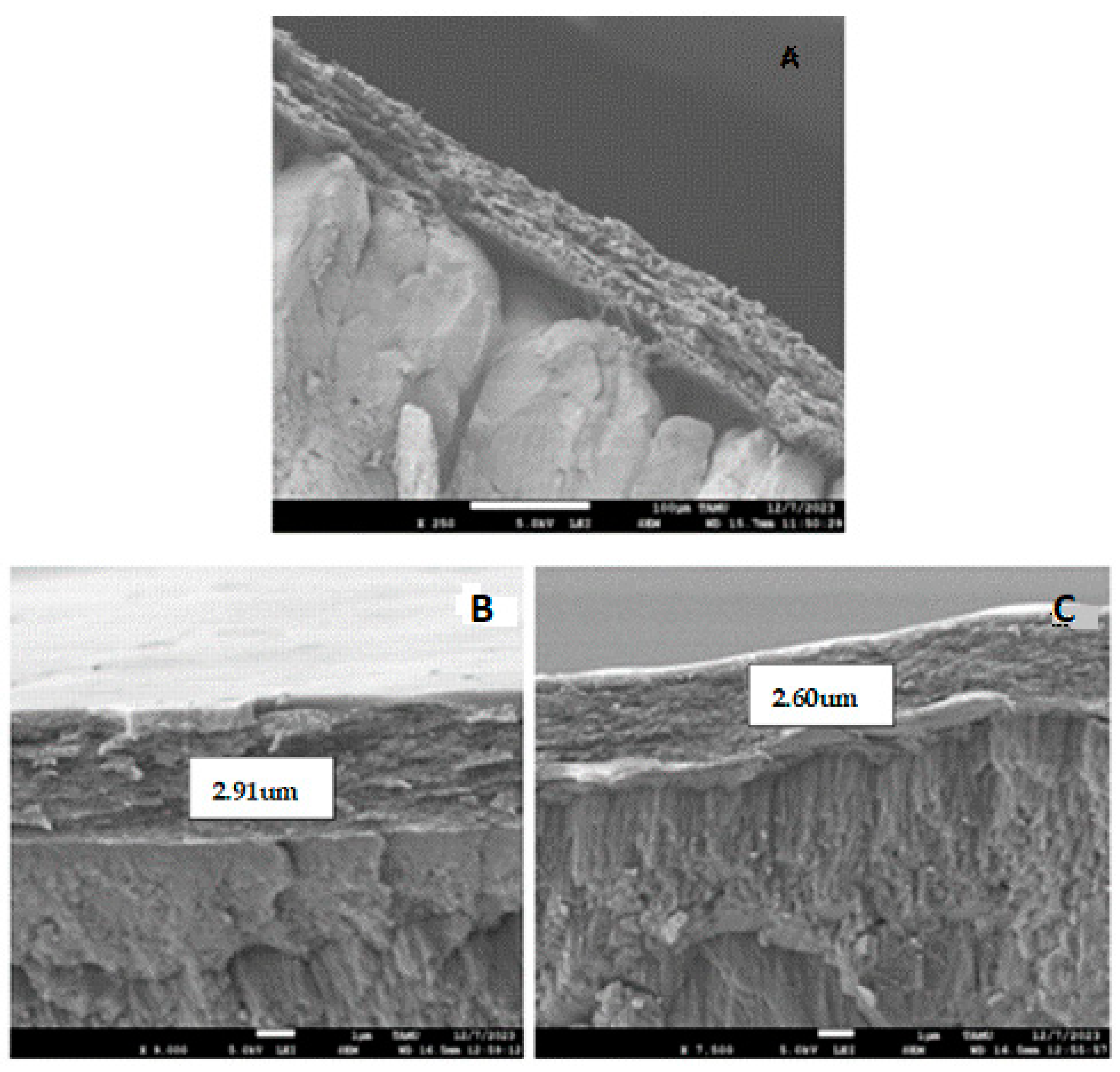
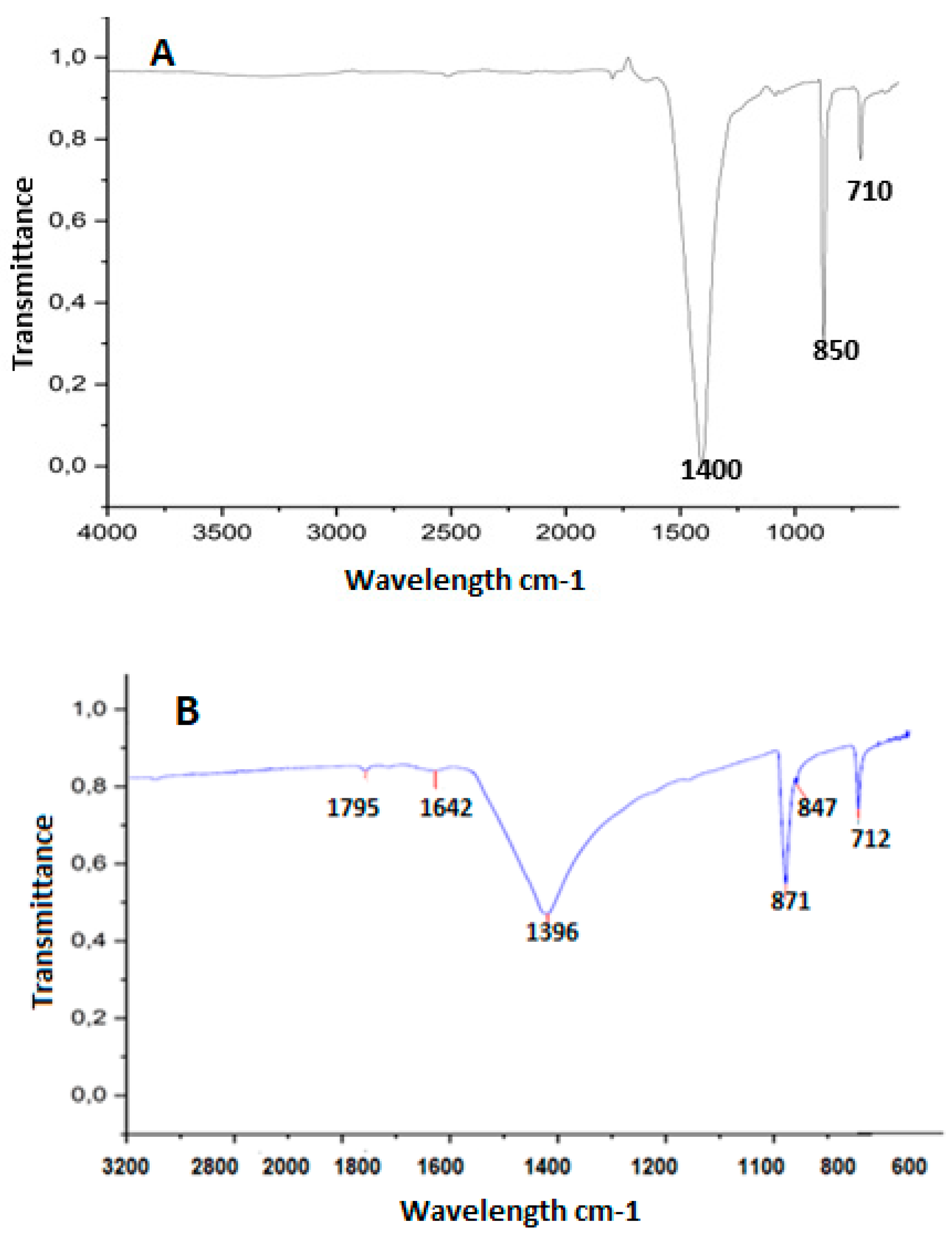
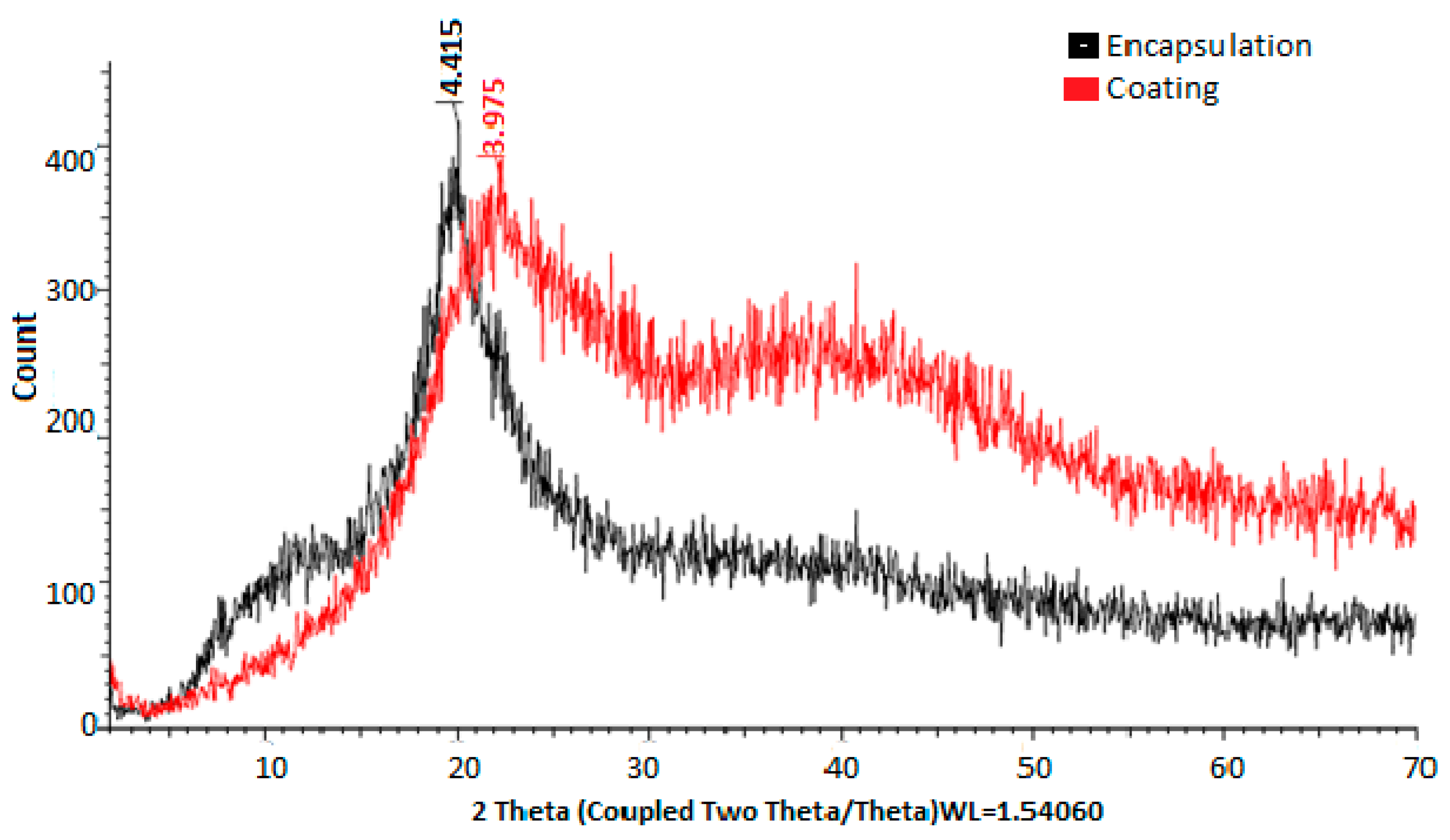
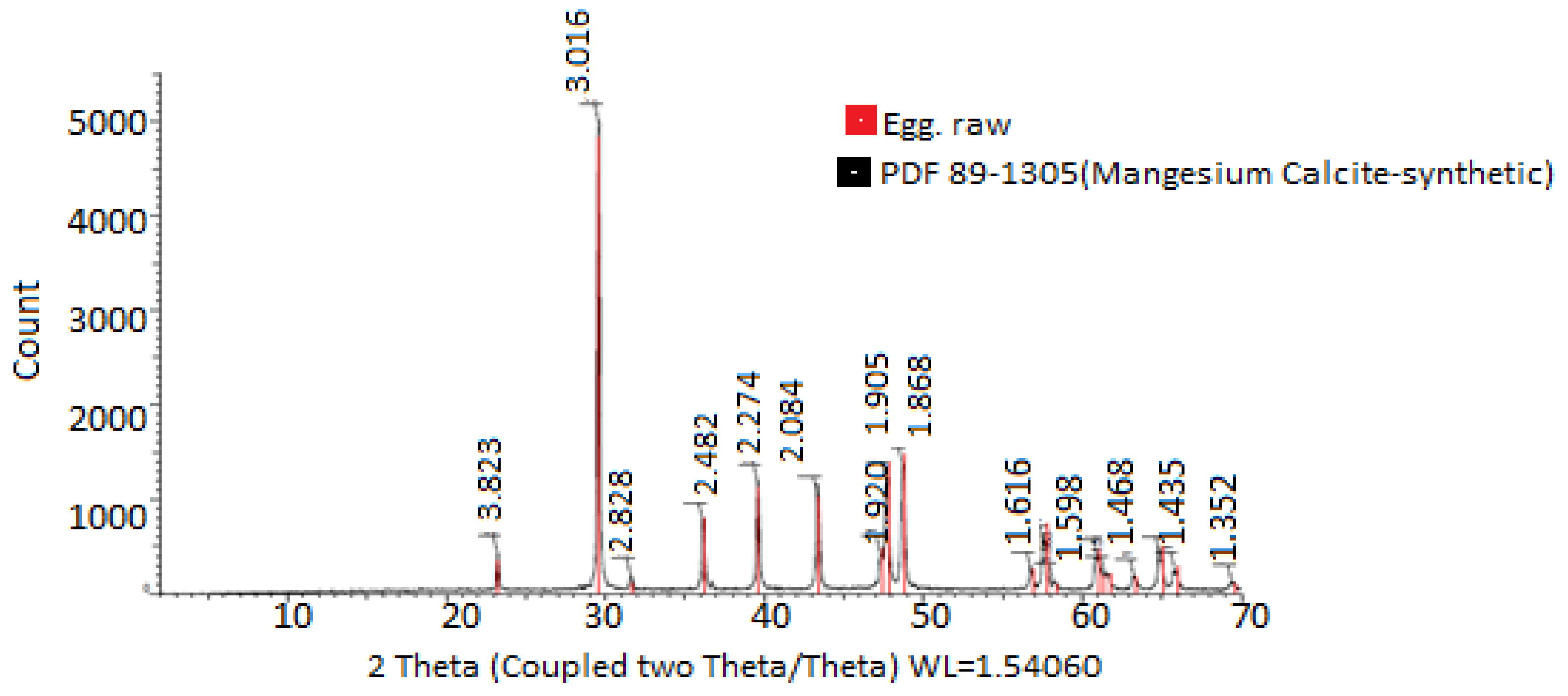

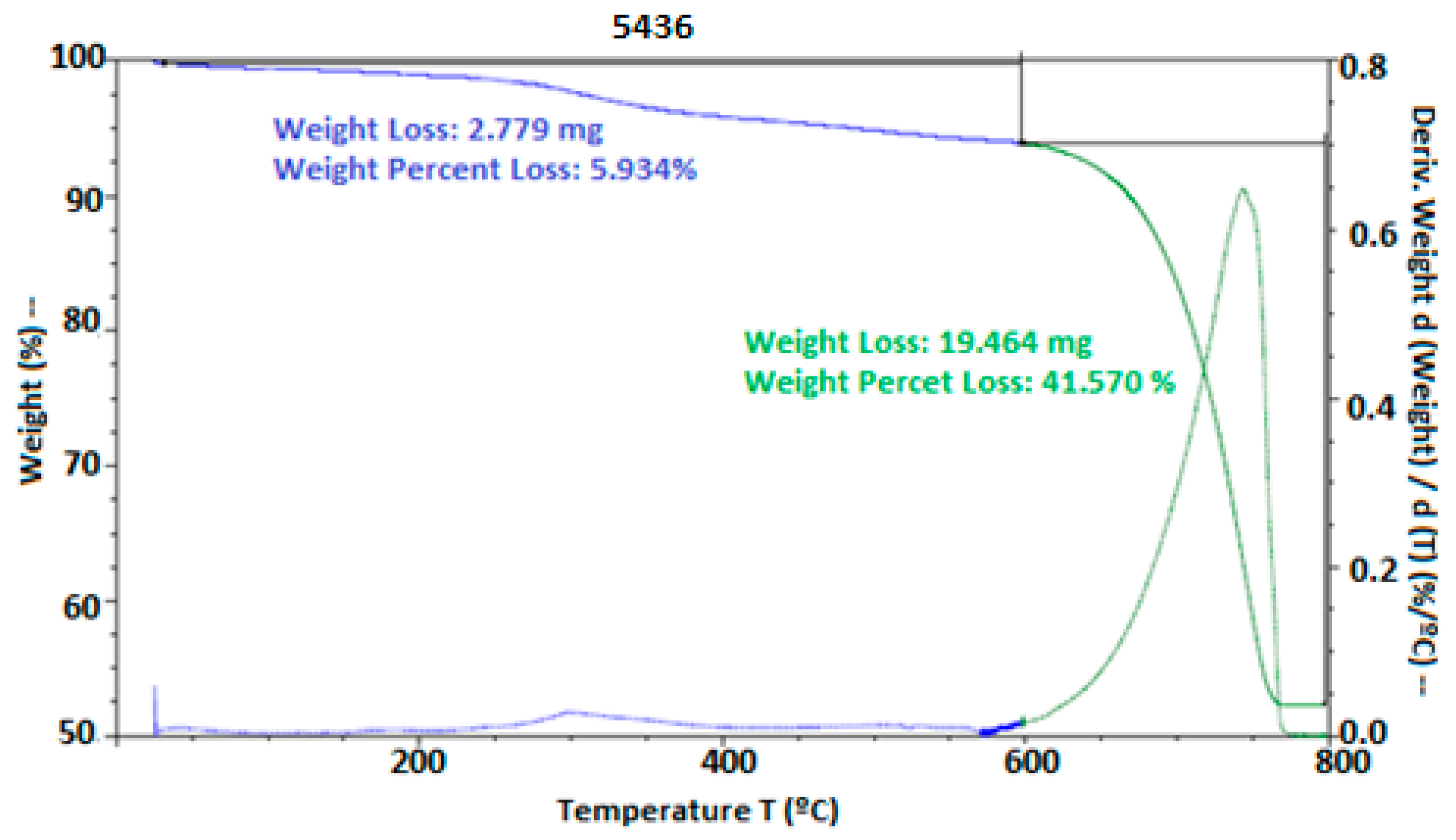

| Microbiological Requirements | |||
|---|---|---|---|
| Parameter | Result | Method | Reference |
| Salmonella spp. | Negative in 25 g of sample | International Standard ISO 6579:2017 [33] | NTC 1240 2nd update [30] |
| Physical Characteristics | |||
| Parameter | Specifications | ||
| Appearance | Oval shape, clean shell (according to NTC 1240), without deformations | ||
| Color | Characteristic of the genetic line, white interior and orange yolk (Roche color fan) | ||
| Odor | Characteristic of the product | ||
| Texture | Smooth shell, semisolid interior | ||
| Freshness | Yolk index (measured on a flat surface, height by diameter) | ||
| Shell | Whole (without visible cracks or fissures). Clean. If there is dust, bird droppings, or egg remnants, this must be less than or equal to 25% of the shell surface Color characteristic depending on the genetic line of the bird. | ||
| Parameter | n | c | m | M |
|---|---|---|---|---|
| Mesophilic aerobes | 5 | 2 | 104 CFU/g or mL | 5 × 104 CFU/g or mL |
| Enterobacteriaceae | 5 | 2 | 10 CFU/g | 102 CFU/g |
| Salmonella spp. | 5 | 0 | Absence/25 g or mL | ----- |
| Listeria monocytogenes | 5 | 0 | Absence/25 g or mL | ----- |
| Molds and yeasts | 5 | 2 | 10 CFU/g | 102 CFU/g |
| Mean Values of Egg Laid by | |||||||
|---|---|---|---|---|---|---|---|
| Samples | Young Hens | Middle-Aged Hens | Adult Hens | ||||
| Before EC | After EC | Before EC | After EC | Before EC | After EC | ||
| Color | L* | 59.06 ± 3.4A a | 59.40 ± 3.3A | 58.10 ± 2.8Aa | 56.77 ± 2.8Aa | 55.74 ± 4.4Aa | 55.87 ± 4.2Aa |
| a* | 21.45 ± 2.1A | 21.14 ± 1.9A | 22.23 ± 1.4A | 22.47 ± 2.4 | 23.45 ± 2.8A | 23.60 ± 1.8A | |
| b* | 29.96 ± 1.3A | 29.57 ± 1.4A | 30.09 ± 0.5A | 29.89 ± 1.0 | 31.39 ± 0.3 | 31.32 ± 0.3 | |
| ∆E* | 69.61 | 69.64 | 69.10 | 69.66 | 68.13 | 68.26 | |
| Hardness (Mean ± STDEV) in N | |||
|---|---|---|---|
| Laying Hen’s Age Group | No EC a | With EC | ∆ b |
| Young | 30.5 ± 1.2Ba c | 32.9 ± 1.7Ab | −2.5 |
| Middle-aged | 29.4 ± 1.5Ba | 31.3 ± 1.1Aab | −1.9 |
| Adult | 29.6 ± 1.5Aa | 29.6 ± 2.3Aa | 0.1 |
| Storage (Days) | Treatment | Storage Conditions | Yolk pH | Albumen pH | Yolk Color | Yolk Index | Haugh Unit | Weight (g) |
|---|---|---|---|---|---|---|---|---|
| 0 | Control | Ambient | 6.5 | 9.9 | 12 | 43.2 | 82.7 | 61.1 |
| Control | Refrigeration | 6.5 | 9.7 | 12 | 43.2 | 82.7 | 61.3 | |
| E + C | Ambient | 6.4 | 9.9 | 11 | 43.2 | 82.6 | 61.2 | |
| E + C | Refrigeration | 6.4 | 9.7 | 12 | 43.2 | 82.9 | 61.5 | |
| 2 | Without EC | Ambient | 6.5 | 9.8 | 12 | 43.2 | 80.3 | 58.9 |
| Without EC | Refrigeration | 6.5 | 9.6 | 12 | 43.2 | 82.7 | 61.3 | |
| E + C | Ambient | 6.4 | 9.8 | 11 | 43.2 | 80.6 | 59.2 | |
| E + C | Refrigeration | 6.4 | 9.5 | 12 | 43.2 | 82.9 | 61.5 | |
| 8 | Without EC | Ambient | 6.6 | 9.8 | 12 | 43.2 | 80.7 | 59.3 |
| Without EC | Refrigeration | 6.5 | 9 | 12 | 43.2 | 82.7 | 61.3 | |
| E + C | Ambient | 6.4 | 9.7 | 11 | 43.2 | 80.9 | 59.5 | |
| E + C | Refrigeration | 6.4 | 9.4 | 12 | 43.2 | 82.9 | 61.5 | |
| 15 | Without EC | Ambient | 6.6 | 9.6 | 11 | 41.6 | 79.6 | 58.2 |
| Without EC | Refrigeration | 6.5 | 8.6 | 12 | 42.5 | 82.7 | 61.3 | |
| E + C | Ambient | 6.4 | 9.6 | 12 | 43.2 | 79.8 | 58.4 | |
| E + C | Refrigeration | 6.5 | 9.3 | 12 | 43.2 | 82.9 | 61.5 | |
| 23 | Without EC | Ambient | 6.7 | 9.3 | 11 | 40.5 | 71.7 | 60.4 |
| Without EC | Refrigeration | 6.6 | 8.4 | 12 | 41.6 | 72.4 | 61.1 | |
| E + C | Ambient | 6.5 | 9.5 | 12 | 42.5 | 71.9 | 60.6 | |
| E + C | Refrigeration | 6.6 | 9.2 | 12 | 42.5 | 72.8 | 61.5 | |
| 30 | Without EC | Ambient | 6.8 | 8.7 | 11 | 39.2 | 71.9 | 60.6 |
| Without EC | Refrigeration | 6.6 | 8.3 | 12 | 40.5 | 72.3 | 61 | |
| E + C | Ambient | 6.5 | 9.4 | 12 | 42.5 | 78.8 | 60.8 | |
| E + C | Refrigeration | 6.6 | 9.1 | 12 | 42.5 | 82.8 | 61.4 | |
| 38 | Without EC | Ambient | 6.8 | 8.5 | 11 | 36 | 69.3 | 58.7 |
| Without EC | Refrigeration | 6.7 | 8.2 | 11 | 37.7 | 71.5 | 60.9 | |
| E + C | Ambient | 6.5 | 9.3 | 11 | 40.5 | 74.9 | 58.9 | |
| E + C | Refrigeration | 6.6 | 9 | 12 | 41.6 | 76.3 | 61.3 | |
| 45 | Without EC | Ambient | 6.8 | 8 | 12 | 32 | 63.2 | 60.2 |
| Without EC | Refrigeration | 6.7 | 8.2 | 11 | 34.1 | 68.8 | 60.8 | |
| E + C | Ambient | 6.6 | 9.2 | 11 | 40.6 | 73.4 | 60.4 | |
| E + C | Refrigeration | 6.6 | 9 | 12 | 40.4 | 75.1 | 61.1 |
| Days of Storage | ||||||||
|---|---|---|---|---|---|---|---|---|
| 8 | 20 | 30 | 45 | |||||
| Attributes | Without EC | With EC | Without EC | With EC | Without EC | With EC | Without EC | With EC |
| Color | 6.4 ± 0.99 a | 5 ± 1.31 a | 5.65 ± 0.98 a | 5.7 ± 1.3 a | 4.5 ± 1.27 a | 5.9 ± 1.05 a | 5.4 ± 0.94 a | 6 ± 0.64 a |
| Smell | 5.5 ± 1.14 a | 5.5 ± 0.99 a | 4.95 ± 1.43 a | 5 ± 1.52 a | 5.3 ± 1.68 a | 5.3 ± 1.34 a | 4.9 ± 1.19 b | 4.6 ± 1.04 b |
| Flavor | 5.8 ± 1.3 a | 5.4 ± 1.1 a | 5.6 ± 1.27 a | 5.4 ± 1.75 a | 5.1 ± 1.31 a | 5.9 ± 0.94 a | 3.0 ± 1.2 b | 6 ± 0.58 b |
| Texture | 6 ± 1.2 b | 5.8 ± 1.2 b | 5.6 ± 1.14 b | 5.7 ± 1.52 b | 6.2 ± 0.89 b | 5.1 ± 1.1 b | 5.8 ± 1.4 b | 6.1 ± 0.78 b |
Disclaimer/Publisher’s Note: The statements, opinions and data contained in all publications are solely those of the individual author(s) and contributor(s) and not of MDPI and/or the editor(s). MDPI and/or the editor(s) disclaim responsibility for any injury to people or property resulting from any ideas, methods, instructions or products referred to in the content. |
© 2024 by the authors. Licensee MDPI, Basel, Switzerland. This article is an open access article distributed under the terms and conditions of the Creative Commons Attribution (CC BY) license (https://creativecommons.org/licenses/by/4.0/).
Share and Cite
Parra A, G.; Clavijo, C.; Castillo, A.; Ortega-Toro, R. Polymeric Coatings with Electrolyzed Acidic Water: A Novel Approach to Extending Egg Shelf Life and Quality. Polymers 2025, 17, 84. https://doi.org/10.3390/polym17010084
Parra A G, Clavijo C, Castillo A, Ortega-Toro R. Polymeric Coatings with Electrolyzed Acidic Water: A Novel Approach to Extending Egg Shelf Life and Quality. Polymers. 2025; 17(1):84. https://doi.org/10.3390/polym17010084
Chicago/Turabian StyleParra A, Gina, Claudia Clavijo, Alejandro Castillo, and Rodrigo Ortega-Toro. 2025. "Polymeric Coatings with Electrolyzed Acidic Water: A Novel Approach to Extending Egg Shelf Life and Quality" Polymers 17, no. 1: 84. https://doi.org/10.3390/polym17010084
APA StyleParra A, G., Clavijo, C., Castillo, A., & Ortega-Toro, R. (2025). Polymeric Coatings with Electrolyzed Acidic Water: A Novel Approach to Extending Egg Shelf Life and Quality. Polymers, 17(1), 84. https://doi.org/10.3390/polym17010084







